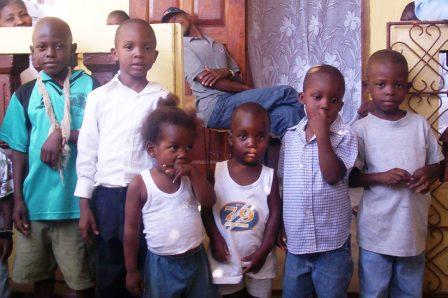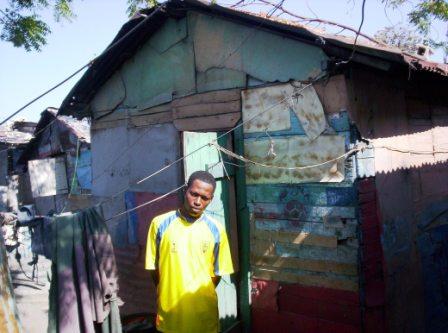I recently received a letter from one of my high school teachers, a man named Ray Karras, whom I very much liked and admired. He’s retired, and it might be almost 20 years since I had been in touch with him, but a couple of circumstances had brought him to mind, and the internet made it possible to find a mailing address. I sent him a note that included a description of some of my work here, and he responded shortly thereafter. He’s not electronic. His letter was typed on the kind of non-electric machine that I remember seeming antiquated when he typed notes to me in the 70’s.
He wrote two things that struck me. First, that he liked the sound of my work and was pleased by his sense that I really like being a teacher. (I do.) Second, that he suspected I had discovered that we teachers learn much more from our students than they ever learn from us.
His second comment not only seems right to me. It seems like something I should always have in mind. I think of myself, and believe I ought to think of myself, as a learner first, and as a teacher second. That fact has a lot to do with the name of the project I’m a part of: the Apprenticeship in Alternative Education. Although it can be important, when talking with people about my work, especially with those who help me with their support, to be able to explain what I am offering to the Haitians I collaborate with, my own emphasis should always be on what the work offers to me.
Bearing that in mind is not a struggle.
I spent last Friday morning in Tonmgato. Tonmgato is on the road between Léogane and Jakmèl. The road is a beautiful, twisting ride through the mountains, one of the best-made roads in the country. Tonmgato is the location of Fonkoze’s Fondwa branch. I was meeting with Rony Mery, Fonkoze’s education coordinator for that branch and the neighboring one in Twen. He and I have a little project we’re working on together, and we needed the morning to push the project forward.
The project began to take shape in February, when I attended part of a week-long workshop he gave for credit center members who were to become teachers of a four-month class that Fonkoze offers in Business Skills. The class is designed for the market women who are Fonkoze’s core members, and it helps them develop a sense of control over their own businesses. They learn to calculate their investment in the business, their expenses, their income, and their profit or loss. Though many of them have been running their own businesses for years, they often have a surprisingly vague sense of how the business is doing. After the four-month class, however, many report that they feel they know what they are doing for the very first time.
But as helpful as the class is for many of our members, we’ve been unhappy with it nonetheless. Observing Business Skills classes in the field made it clear that they were turning into conventional, teacher-led courses. Many of the teachers were standing in the front of the classroom, leading group reading and repetition. They were behaving, understandably, like most of the teachers whom they had seen in Haiti, where teachers typically dictate to students or write texts on a blackboard that students then copy down and memorize. They lead recitations of the texts to help students get them down.
This was not at all what we were looking for. Like all of Fonkoze’s education programs, the Business Skills class has, as its overarching goal, reinforcing our members’ leadership and initiative, their sense of control. We are working to help them increasingly think of themselves as actors, as people capable of changing their own situation and of serving their communities as agents of change.
In one sense, the class was succeeding. It was helping them gain better control over their businesses, their sources of income, and, so, helping them develop the tools they need to make good decisions in that sphere.
In another sense, though, the classes were undermining themselves. Participants were turning passive as their teachers stood filling them with the contents of a book. They were not developing initiative. They were not developing the habit of looking to themselves and to one another for answers. They were not figuring things out.
I spoke to Rony about the problem following a visit to a Business Skills class that occurred shortly after his workshop. We agreed that the problem was largely our team’s fault. Much of what the team has generally done during the workshop for prospective teachers has modeled the very behaviors we want teachers avoid. The team had mainly been using the week to summarize the contents of the workbook that the course depends on. Under the pressure for time that summarizing four months of work in a single week inevitably creates, they were finding themselves talking a lot. And so, when the teachers finished following our team’s explanations for a week, they were going into their classrooms and offering their students the very same explanations.
Worst of all, it seemed entirely unnecessary for them to do so. The Business Skills class uses a workbook, with explanations that are simple and relevant and plenty of practice exercises. If we could just get teachers into the habit of pushing their students to use the book as a tool, a real study guide, that might be enough to draw participants into the action. And we might be able to get teachers to work that way with their participants if we work that way during the week we spend with them.
So Rony and I decided to redesign the workshop for prospective Business Skills teachers. I say “we”, but he’s really doing the main work. We met last Friday so that we could go over a draft schedule that he had created. We talked about each part of the workshop, about how we could maximize the amount of activity it would demand on the part of workshop participants, how it could move away from simple explanations of the book’s contents towards helping them learn to use the books we have as tools. It was a great way to spend a few hours with a colleague. The schedule will need a little more revision, but we hope to have tested in one or two places by the end of June. The real proof will come in July and August, when we visit Business Skills classes. Only then will we begin to learn whether changing our workshop can push us in a new direction.
Move changes for the class are in the works. Even if we can succeed in making it a participative, active experience that helps our members take charge of their businesses, it will still fall short of what it needs to become. It will never be enough to help our member ensure that their businesses are profitable. We want them to be able to lift themselves out of poverty, and they can only do so if the learn to use their profits well.
The class’s emphasis needs to broaden so that it helps them learn to use their businesses to accumulate wealth – if “wealth” is the word for the kind of accumulation we hope for. In August, Rony and I will have the chance to spend a couple of weeks with a real expert. We hope that, with his help, we will be able to make the changes we need to make.
We have a lot to learn if we’re to move forward. And as we do move forward, we’re certain to learn even more.

